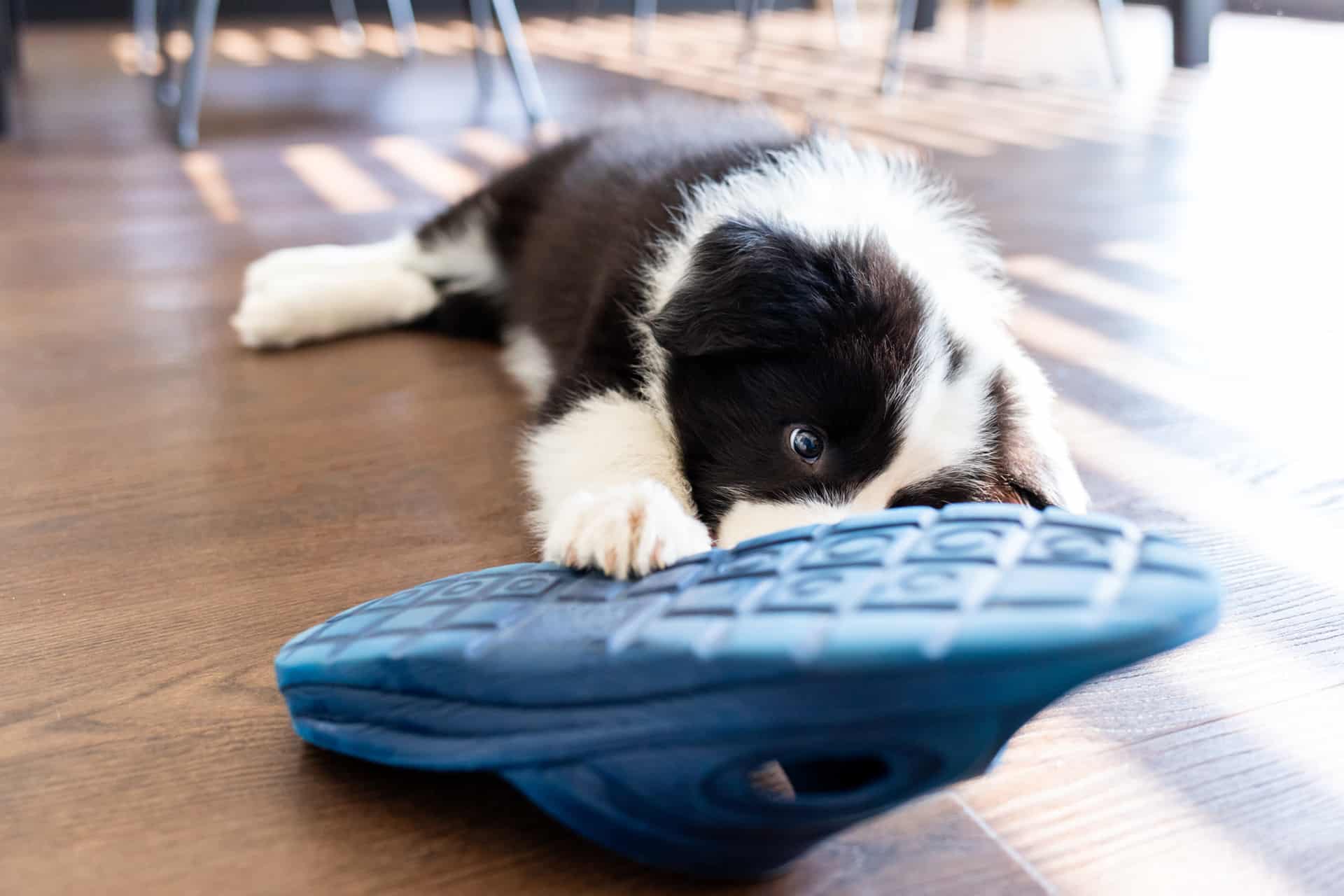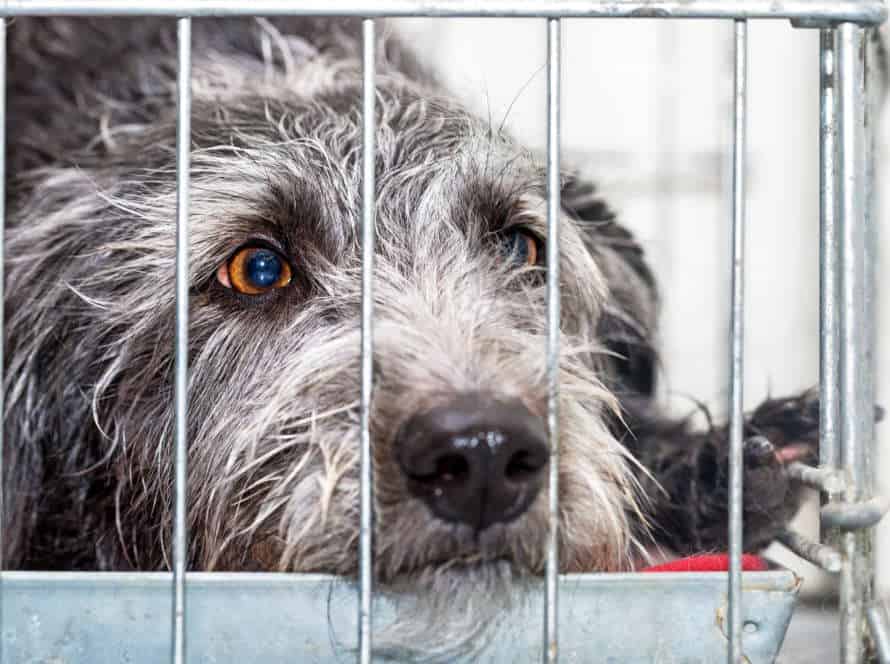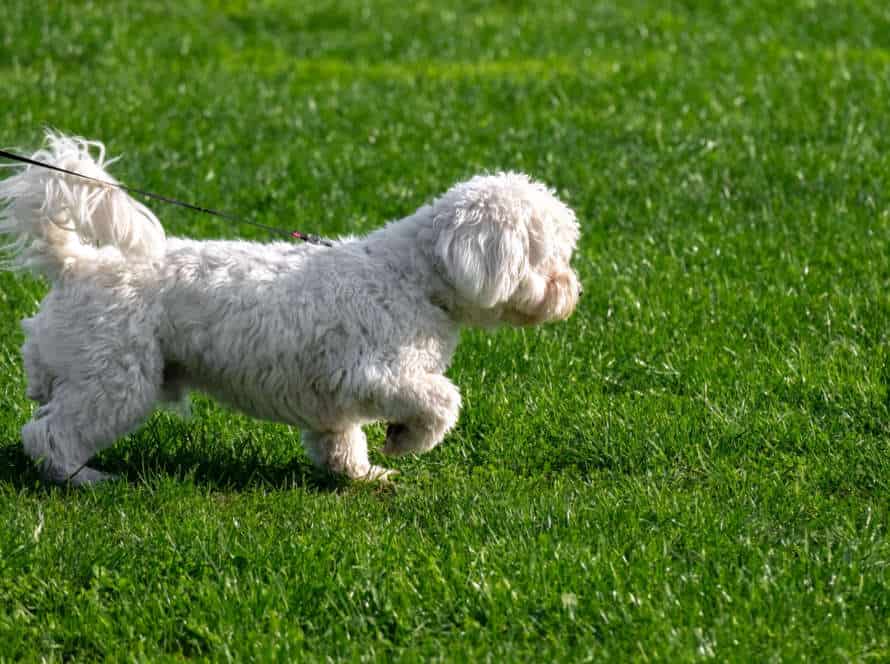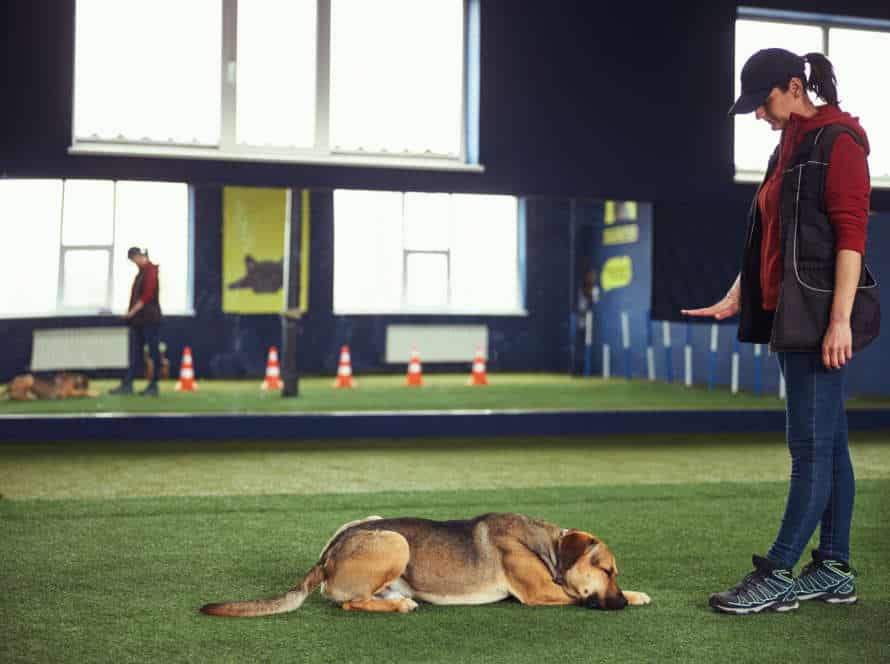The Benefits of Teaching Bite Inhibition Early in Puppyhood
Teaching bite inhibition to puppies is important. Here are the benefits:
- Reduce aggressive behavior risk.
- Build trust and bond.
- Improve socialization.
- Prevent injury.
- Stress-free grooming.
Tip: Start training as soon as possible. Use positive reinforcement like treats, toys, and gentle touch.
Understanding Bite Inhibition
Bite inhibition is essential for pups. It’s a type of self-control which makes them gentle with people and other critters. It helps create good communication between puppies and humans. Knowing this skill is vital for pups to understand what is okay to do around humans.
This article tells you about bite inhibition. It also looks at the advantages of teaching it during puppyhood.
Bite Inhibition Defined
Bite inhibition is a pup’s ability to control their bite pressure and force. It’s an important part of their temperament and behavior. Early teaching can help avoid bad behaviors and build relationships with their human family. These are the benefits of teaching early:
- Less aggression towards humans and other animals.
- Fewer accidental injuries.
- Better relationships with owners, family, and other animals.
Teaching should be part of puppyhood training and socialization. Interrupt play if they use too much force or pressure. For help, consult a professional dog trainer.
Why Bite Inhibition is important
Bite inhibition is key. It stops aggressive behavior and boosts good dog-human relationships. Teaching bite inhibition to your pup early encourages them to control their bite strength.
Benefits of teaching bite inhibition in puppyhood:
- Lower risk of injury – Puppies learn to adjust the power of their jaw, reducing accidental injury when playing with humans or other animals.
- Avoids future aggression – Canines that don’t have bite inhibition early on become more prone to aggressive conduct and may bite as a defense mechanism.
- Ensures safe play – Dogs with good bite inhibition are more likely to enjoy safe play, reducing the risk of getting hurt and hurting others.
Training bite inhibition in puppies is a must for raising a well-socialized and behaved dog.
How to Teach Bite Inhibition
Teaching bite inhibition to puppies is very important. It prevents aggressive behavior and promotes positive interaction with humans and other canines. Here’s a step-by-step process:
- Allow your puppy to mouth your hands. But, if they bite too hard, say “ouch” or make a high-pitched noise.
- Remove your hands and ignore them for 30 seconds. This communicates that their behavior is not acceptable.
- Repeat this consistently whenever your puppy bites too hard. Reinforce gentle mouthing, not rough play.
- Start teaching bite inhibition early. This reduces the risk of aggression.
Pro Tip: Socialize your puppy. This helps them learn appropriate biting behavior and build healthy social skills.
The Benefits of Teaching Bite Inhibition
Teaching bite inhibition to puppies is paramount! It helps them learn to manage the intensity of their bites. Plus, it aids in fostering trust and cooperation between them and their owners. Let’s discuss the benefits of teaching bite inhibition when puppies are still young.
Preventing Aggression towards Humans
It’s vital for dogs and others that we prevent aggression towards people. Teaching them bite inhibition, especially during puppyhood, can be a big help. Here are the benefits:
- Lower Risk of Injury: Puppies taught bite inhibition are less likely to cause injury if they bite later on.
- Better Communication: Training lets dogs know which biting behaviors are ok and which are not. This avoids confusion and makes communication between the dog and its owners better.
- Improved Socialization: Dogs taught bite inhibition tend to be calmer around people and other animals.
- Early Intervention: Training puppies in bite inhibition right away prevents bad habits from forming. It’s much harder to correct aggressive behaviors in older dogs.
Pro Tip: Taking the time to properly train your puppy in bite inhibition will create a happier and healthier relationship with your pet.
Reducing the Risk of Injury
Training your pup in bite inhibition is a great way to reduce the risk of injury and promote safe play. Start this training as soon as possible!
Benefits include:
- Reducing accidental injury: Bite inhibition teaches puppies how to play without hurting people.
- Preventing aggressive behavior: Puppies who learn this are less likely to be aggressive in adulthood.
- Socialization: Helps pups learn how to interact with people and other dogs.
- Strengthening the bond: Training in this helps build a trusting relationship between you and your pet.
- Early training is key: Start it early for the most successful results.
Pro tip: Be patient and consistent. Praise good behavior and guide negative behavior with a firm but gentle hand.
Making Training Easier
Teaching bite inhibition to puppies is essential. It makes training easier, safer and more successful. Puppies that learn to manage their bite force and behaviour during their formative years become obedient, well-mannered dogs.
The benefits of teaching bite inhibition early on:
- Safer human-dog interactions. Less chance of puppies hurting people or other animals unintentionally.
- Reduced aggression. Puppies that can regulate their bite force are less likely to show aggression to other dogs or strangers.
- Better communicators. Puppies that learn bite inhibition can better understand human and canine body language, making them better communicators.
Start teaching bite inhibition in puppyhood to ensure a lifetime of good behaviour and safe interactions. Pro tip – Positive reinforcement works best.
Common Mistakes to Avoid
Teaching your pup proper bite inhibition? Important! It’s part of puppy socialisation and a good relationship. Common mistakes happen though. Let’s look at them and the advantages of teaching young pups early. Avoiding these blunders is key!
Punishing Your Puppy for Biting
Lots of pet owners make the same mistake: punishing a puppy for biting. It doesn’t work, and it can even have bad effects on the pup’s growth. The key is teaching bite inhibition when they are young, which will help in the long run. Here are some faux pas to avoid when trying to correct your puppy’s biting:
- Hitting or spanking.
- Yelling.
- Ignoring basic needs such as food and water.
- Encouraging rough play.
- Not disciplining your puppy when they bite.
Instead of punishing, show your pup a toy or treat to redirect their biting. When learned young, this technique will help them learn self-control and develop good relationships with people and other animals.
A tip: Patience, consistency, and positive reinforcement are vital when teaching this lesson.
Allowing Rough Play
Rough play in puppyhood can help teach dogs to regulate their bite and form good social habits. But, there are a few common errors to dodge while teaching bite inhibition:
- Not being consistent with training and feedback.
- Punishing them for biting too hard.
- Encouraging aggressive actions by playing too hard.
Instead, try these tips to aid your pup in developing good bite inhibition:
- Let them socialize with other pups and people.
- Give them toys and other objects to chew.
- Encourage gentle play with praise and rewards, and discourage rough behavior.
Educating bite inhibition early on can prevent future behavioral issues and aggressive behaviors in adult dogs. Pro tip: Positive reinforcement and consistency are key for puppies learning.
Inconsistent Training
Inconsistent training is a frequent mistake made by puppy owners when teaching their pups bite inhibition. This is a fundamental part of dog training that helps protect from injuries due to dog bites. It also teaches them how to take treats, toys or food from humans gently.
The advantages of starting bite inhibition early in puppyhood are many. Your pup will learn to be gentle and less likely to snap when excited. Their communication skills with you and other dogs will improve as they’ll use less physical contact to express themselves.
However, inconsistent training can impede the puppy’s capability to learn bite inhibition. Make sure everyone interacting with your puppy follows the same training approach. Also, keep your pup away from games such as tug-of-war or hand wrestling which involve biting.
Encourage them to use their teeth gently while keeping an eye on them and rewarding the right behavior. Make it enjoyable and rewarding for them to earn praise and treats for displaying good bite inhibition.
Implementing Bite Inhibition Training
Bite inhibition training is key for pups! It helps them learn bite control and not to bite too hard. It’s a very important behavior to teach them when they are puppies. Knowing how to do it right can help pups turn into well-mannered adults.
Let’s check out the benefits of teaching bite inhibition early and the methods to do it.
Starting Early
Train your pup in bite inhibition early on! It’s especially important for breeds such as Pitbulls, Mastiffs and Boxers which have a tendency for stronger bites. Bite inhibition teaches a pup to control the force of their bite, so they can play without causing harm.
Benefits:
- Lower injury risk from playful biting or aggression later on.
- Better socialization with humans & other dogs.
- Enhanced communication without biting.
Starting early is key for successful bite inhibition training. Give your puppy positive reinforcement for good behavior & professional help if needed.
Using Positive Reinforcement and Redirecting Behaviors
Positive reinforcement and redirection of behaviors are essential for teaching bite inhibition to young puppies. This helps them understand the difference between appropriate play and non-play biting, put a stop to aggressive behavior, and build a positive relationship with their owners.
Here’s how to use these techniques:
- If your pup bites, redirect their attention straight away to a toy or chew bone.
- When they stop biting, give them praise and treats as a reward.
- Constantly show them appreciation for good behavior, and ignore them when they’re misbehaving like growling or barking.
- Have a routine for playtime and training, to reinforce good behavior and help them learn the difference between play and aggression.
- Speak to them in a positive and calm way, and don’t resort to punishment or negative reinforcement.
Pro tip: Begin bite inhibition training early to prevent any aggressive behavior and to develop a great relationship with your puppy.
Consistency is Key
Bite Inhibition Training is essential for puppyhood and consistency matters. Benefits of early teaching:
- Reduced aggression. Puppies with bite inhibition training are less likely to become aggressive or bite hard in scary situations.
- Improved social skills. Puppies that learn bite inhibition early can communicate better with other dogs and humans.
- Safety. Puppies with good bite inhibition skills won’t harm others.
To be successful, Bite Inhibition Training needs to be repeated regularly until it becomes a habit.
Continuing Education
Puppy owners, take note! It’s key to keep learning about our furry pals and their behavior. Bite inhibition is a major part of that education. We need to understand why it’s important and start early to get the best results. Let’s review the importance of bite inhibition and how to teach it.
Ongoing Training Throughout Puppyhood
Training your puppy is important for good behaviour. Teaching them bite inhibition is a lesson to start early.
Bite inhibition training teaches your pup to control the strength of their bites and mouth. Starting this training early increases safety around children and other pets.
Puppies learn bite inhibition from their littermates. They learn how to play bite without hurting each other during playtime.
Tips for teaching bite inhibition:
- Do not use your hands as toys.
- Make a loud noise like “ouch” or a high-pitched yelp when they bite too hard.
- Stop playtime or redirect their attention to a toy if they bite too hard.
Consistency and patience are vital for teaching bite inhibition. Working with your puppy in their early stages helps them learn this lesson.
Encouraging Socialization with Other Dogs and People
It’s vital to let your pup socialize with other puppies and humans. This teaches proper behavior, builds social skills, and reduces aggression risk. An invaluable lesson during this process is bite inhibition.
Bite inhibition means a puppy can control the force of its bite, preventing harm if they accidentally bite someone. They learn this in puppyhood when they play with littermates.
To teach bite inhibition:
- Encourage your pup to play with other puppies. If one bites too hard and the other yelps, the first pup learns not to bite hard.
- Play with your pup too, yelping or saying “ouch” if they bite too hard. This teaches them to control the pressure of their bites.
- Keep reinforcing this behavior as they grow up. This way, they’ll learn to control their bites when playing with other dogs or people.
This skill is especially useful for avoiding hostile biting situations.
Encouraging Good Behavior Beyond Puppyhood
Teaching bite inhibition early in puppyhood can bring long-term rewards for your pup’s behavior. This is called ‘bite inhibition.’ It means your dog knows how to control the strength of their bite, so they won’t hurt anyone when playing or being handled.
Here are the advantages of teaching bite inhibition early:
- Reduced risk of bites. If your puppy is taught this, they won’t cause serious harm if they do bite someone.
- Better socialization. This training helps them learn the right play behavior with other dogs and people.
- More trust. Dogs with good bite inhibition skills are easier to handle, groom, and have medical care done on them.
Pro Tip: Even if you adopt an older dog who hasn’t learned bite inhibition, don’t worry. You can still teach them. Get help from a professional dog trainer.
Frequently Asked Questions
Q: What is bite inhibition?
A: Bite inhibition is the ability of a dog to control the force of its bite, commonly learned during puppyhood.
Q: Why is teaching bite inhibition important?
A: Teaching bite inhibition is important because it can prevent serious biting incidents in the future, and it also helps dogs understand appropriate play behavior with humans and other dogs.
Q: When is the best time to teach bite inhibition?
A: The best time to teach bite inhibition is during puppyhood, ideally between 8 to 16 weeks old.
Q: How do you teach bite inhibition to a puppy?
A: Teaching bite inhibition involves redirecting a puppy’s biting behavior onto appropriate chew toys, rewarding gentle play, and consistently correcting rough play by saying “ouch” or yelping and then ignoring the puppy for a few minutes.
Q: What are the benefits of teaching bite inhibition early in puppyhood?
A: The benefits of teaching bite inhibition early in puppyhood include preventing serious biting incidents, instilling good play behavior, and developing a strong bond between the puppy and their owner.
Q: What if my older dog has not learned bite inhibition?
A: It is still possible to teach bite inhibition to an older dog, but it may take more time and effort. Seeking guidance from a professional dog trainer is recommended.







